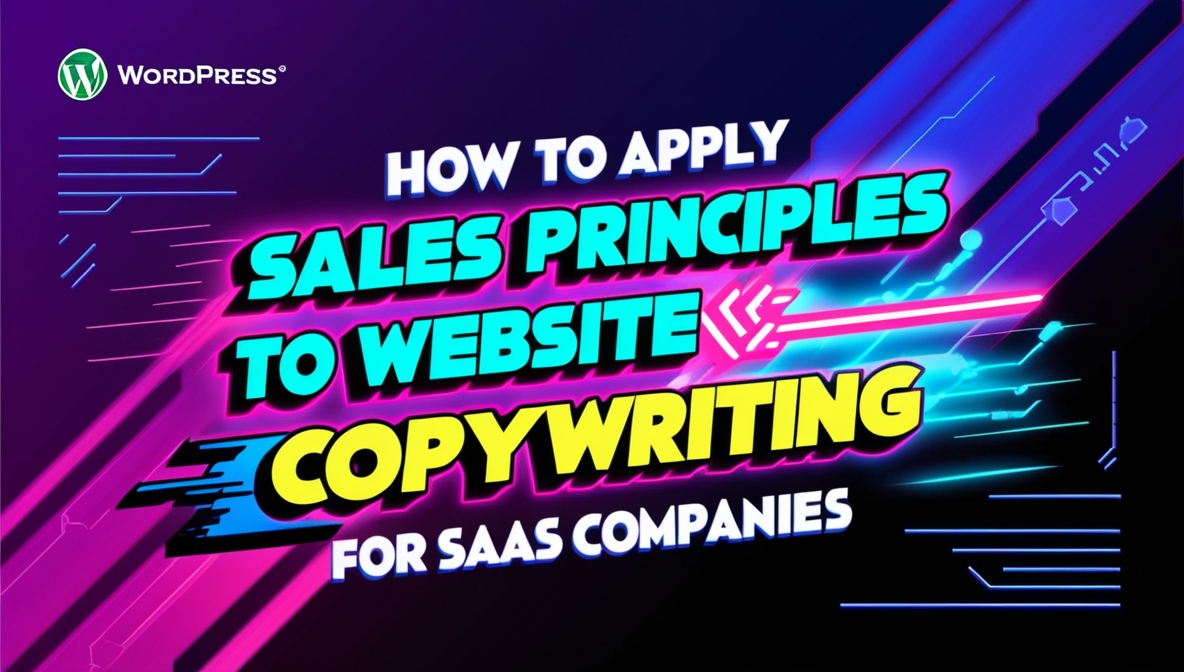Sell Me This Content – How to Apply Sales Principles to Website Copywriting for SaaS Companies
If you’ve ever been in a sales interview, you might have been hit with the classic challenge: “Sell me this pen.”
While this test is typically used to evaluate sales skills, the principles behind it apply far beyond in-person selling. In fact, one of the most critical areas where these principles come into play is content writing for websites—especially in the SaaS industry.
Let’s apply this framework to a SaaS company that sells desktop and mobile banking solutions for banks and credit unions. If you’re responsible for writing website content for such a company, you’re not just filling up pages with text—you’re selling a solution. And just like with the pen, your content must:
- ✅ Understand the customer’s needs
- ✅ Create value by solving their problems
- ✅ Build urgency and differentiate from competitors
- ✅ Guide them toward the next step—conversion
So, how do you apply this mindset to website copy that actually drives conversions? Let’s break it down.
Step 1: Start with the Customer, Not the Product
A common mistake in SaaS website copy is jumping straight into features:
🚫 “Our digital banking platform offers seamless integration, robust security, and an intuitive user experience.”
While that sounds impressive, it doesn’t immediately address what the customer cares about. Just like in a sales conversation, we need to qualify the customer’s pain points first.
Instead, the content should lead with the bank or credit union’s specific challenges:
- ✅ “Is your online banking platform frustrating your customers and leading to churn?”
- ✅ “Struggling to keep up with digital-first competitors while maintaining security?”
- ✅ “Your customers expect a seamless digital banking experience—are you delivering?”
By identifying a problem first, we engage the reader and set up the solution—just like a great salesperson would when selling a pen.
Step 2: Sell the Benefits, Not Just the Features
Just as you wouldn’t sell a pen by listing its specs (ink type, barrel material, grip), you shouldn’t sell banking software by focusing solely on its features.
Instead of this:
🚫 “Our SaaS platform includes multi-layer authentication, AI-powered fraud detection, and real-time payment processing.”
Write this:
- ✅ “Protect your customers with advanced fraud detection that stops threats before they happen.”
- ✅ “Boost retention by giving users a banking experience that’s effortless across desktop and mobile.”
- ✅ “Reduce costs and manual work with automated payment processing that increases efficiency.”
Great salespeople don’t just describe what a product does—they connect it to a real-world benefit. Website content must do the same by answering:
- What problem does this solve?
- How does it impact the bank or credit union’s business?
- What’s the end benefit for their customers?
Step 3: Differentiate by Creating Urgency
When someone asks you to sell them a pen, a strong response might be:
“You have an important contract in front of you right now. You need to sign it, and you don’t have a pen. This pen ensures you never miss a moment to close a deal.”
In SaaS website copy, we create urgency by positioning the solution as a necessary, timely investment rather than a “nice-to-have.”
🚫 “Our digital banking platform improves customer satisfaction.” (Too generic, no urgency)
✅ “Banks that don’t offer seamless mobile banking are losing customers to fintechs—don’t let that be you.”
✅ “Digital-first consumers expect banking on their terms. Upgrade your online banking before they switch to a competitor.”
✅ “Regulations and security threats are evolving. Is your banking platform ready?”
Great SaaS content doesn’t just present a solution—it highlights what’s at stake if the reader does nothing.
Step 4: Guide the Reader Toward Action (Close the Deal)
Even if a salesperson makes a compelling pitch, they’ll lose the sale if they don’t ask for the close.
Website copy works the same way. If you provide strong messaging but don’t give clear next steps, you risk losing potential customers.
🚫 “Contact us for more information.” (Too vague, not compelling)
✅ “Schedule a free demo and see how easy it is to switch to a better banking platform.”
✅ “Get a personalized consultation to discover how we can modernize your digital banking experience.”
✅ “Try our platform risk-free—see why banks and credit unions trust us to power their digital transformation.”
A strong call-to-action (CTA) makes it easy for the visitor to take the next step. Just like a great salesperson, we guide the buyer through the decision process.
Final Thoughts: Selling Through Content
Website content for a SaaS company selling desktop and mobile banking solutions isn’t just informational—it’s persuasive. If you think like a salesperson, your content will:
- ✅ Start by identifying the customer’s pain points (rather than just listing features)
- ✅ Sell the benefits in a way that creates real value
- ✅ Differentiate from competitors by creating urgency
- ✅ Guide the customer to take action with strong CTAs
By applying the principles of “Sell me this pen” to SaaS content, you’re not just writing—you’re selling through storytelling, persuasion, and problem-solving.
So next time you craft website copy, ask yourself:
“Would this make a bank or credit union feel like they need to act now?”
If the answer is yes, then congratulations—you’ve just “sold the pen” through content.



